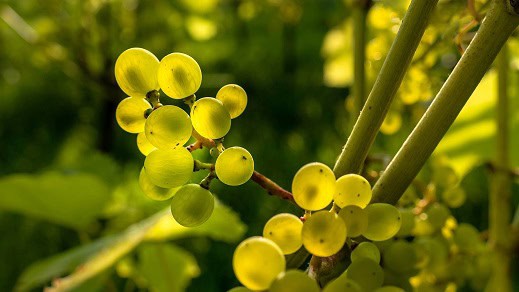 Alcohol is a classic topic where contradictions are flying at you left, right and centre. One minute a nightly glass of wine is beneficial for blood pressure, the next minute all alcohol is a devil which must be sworn off forever.
Alcohol is a classic topic where contradictions are flying at you left, right and centre. One minute a nightly glass of wine is beneficial for blood pressure, the next minute all alcohol is a devil which must be sworn off forever.
Resveratrol is supposedly a heart healthy red wine super compound, yet the same newspapers will talk about toxins assaulting heart tissue just 1 week later. You don’t want to get confused and forget your original mission, so here are the 9 basic alcohol facts that all acne patients should know.
Absorb these facts, and you’ll still be able to delve deeper into certain topics if you wish, but you’ll now be armed with the fundamental acne knowledge.
One – alcohol drains your antioxidants
We’ll start with the negatives, and there’s no doubt that alcohol is a poison, albeit a naturally occurring one. In nature, alcohol appears in rotting fruits, which drop to the forest floor and begin to ferment as bacteria consumes the sugars.
For example, leave a pineapple in the fridge for too long, and this will also gain an alcoholic tang. Great apes evolved the ability to eat alcohol 10 million years ago, which survives in gorillas, humans and chimpanzees today (bats are also capable drinkers). However, this detoxification process relies on glutathione, one of the body’s main self-manufactured antioxidants. Every drink causes your levels to drop, and binge drinking will send them plummeting to the floor. Addressing glutathione depletion is a doctor’s first call in overdose situations, usually with an NAC pill.
You can be sitting in a comfy armchair rather than a hospital bed, but the glutathione reduction will still filter through: acne-prone skin has been found to contain 20% less glutathione than average. It’s needed to deactivate chains of destabilising free radicals, and to protect vital acne nutrients like vitamin E from destruction.
The vitamins are also a danger of their own. Excessive drinkers had a 91% rate of vitamin C deficiency in one study, while alcohol increases the activity of enzymes that break down vitamin A. The former lowers stress hormones and increases collagen, the latter prevents oily skin.
Two – alcohol increases inflammation
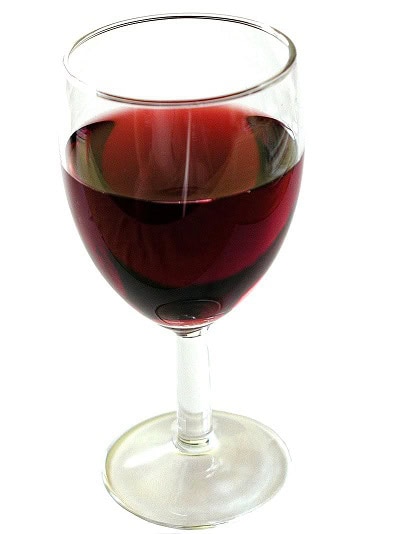 Alcohol assaults the armours of your skin, with vitamins and antioxidants being the armour. Like with any fortifications, the defences can easily withstand minor assaults, which bounce off them like light rocks, but not a prolonged siege with immense force. Another of alcohol’s dangers is adding inflammation to your skin, because of a toxin it generates during its metabolisation called acetaldehyde.
Alcohol assaults the armours of your skin, with vitamins and antioxidants being the armour. Like with any fortifications, the defences can easily withstand minor assaults, which bounce off them like light rocks, but not a prolonged siege with immense force. Another of alcohol’s dangers is adding inflammation to your skin, because of a toxin it generates during its metabolisation called acetaldehyde.
This appears during phase 1 of detoxification, when the enzyme alcohol dehydrogenase breaks whole alcohol molecules down into acetaldehyde. This is further metabolised into harmless acetate by the enzyme acetaldehyde dehydrogenase, but not before acetaldehyde has several hours to roam the body.
Acetaladehyde clatters around assaulting any cell it meets; it’s largely behind the liver dangers of alcohol, plus the brain dulling and joint aches. Acetaldehyde’s toxic effects all over the body are the main cause of a hangover, and your skin isn’t exempt. If blueberries are like a soothing ice blanket, then acetaldehyde is like a mild form of napalm, adding fiery inflammation to all your pimples at once.
Acetaldehyde adds redness to existing acne, and may increase inflammation to a point where tiny new ones are generated.
Three – but you don’t have to give it up
Despite these horror stories, there’s no need to give up alcohol entirely to have clear skin. In fact, there’s probably no acne patient alive that can’t drink some alcohol except a tiny handful with undiscovered genetic anomalies.
Unlike what the media suggests, a couple of glasses probably won’t benefit your skin (unless vasodilation improves your face’s blood flow), but there’s a threshold below which your skin can easily withstand alcohol. The antioxidants and enzymes patrolling your bloodstream can easily absorb two beers, or a glass of wine.
The two main dangers are easy to combat specifically. With glutathione, you must supply the base ingredients of this antioxidant like magnesium, zinc and sulphur. With vitamin C and vitamin A, you must supply the vitamins themselves to deepen your reserves.
The acne dangers of alcohol are more like a very steep mountain. The initial slopes are gentle and rolling, until a certain point is crossed, where there’s a mass gain of steepness, with the danger accelerating ever more rapidly from that point on. Binge drinking will deplete your acne defences, but even this is safe occasionally, perhaps every couple of weeks. It’s perfectly possible to drink a little every day (i.e. one beer nightly) and not gain pimples.
Four – wine
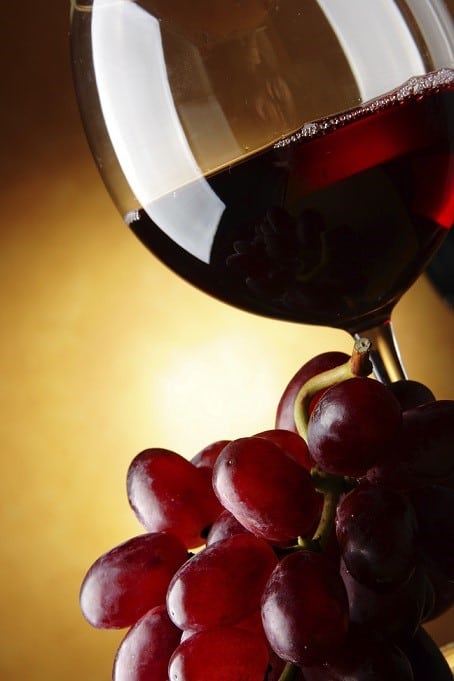 The type of alcohol is also important, and the media praise for red wine is also true for your skin. Red wine is not harmless, yet is the most acne-friendly beverage due to its abundant antioxidant count.
The type of alcohol is also important, and the media praise for red wine is also true for your skin. Red wine is not harmless, yet is the most acne-friendly beverage due to its abundant antioxidant count.
One glass scores 3873 on the ORAC scale, surpassing grapes themselves and even strawberries. Red grapes themselves have a large variety of antioxidant forms: catechin, epicatechin, procyanidins, quercetin 3-0 glucoronide. These survive the fermentation of bacteria and the squishing of vineyard workers’ feet jumping up and down in grape barrels.
The antioxidants will partly counteract the glutathione depletion, and then there’s red wine’s overlord of antioxidants: resveratrol. This has the ability to extend lifespan in mice (and hopefully humans) by manipulating the SIRT3 gene, which extends telomere length in cells. Some believe that resveratrol is why wine-guzzling Frenchwoman Jeanne Calment lived to be 122.
Importantly for acne, resveratrol can stimulate glutathione production, meaning that red wine contains a direct counter to alcohol’s acne dangers. White wine contains far less resveratrol, but is also strong for antioxidants, beating straight vodka or gin with ease.
Five – beer
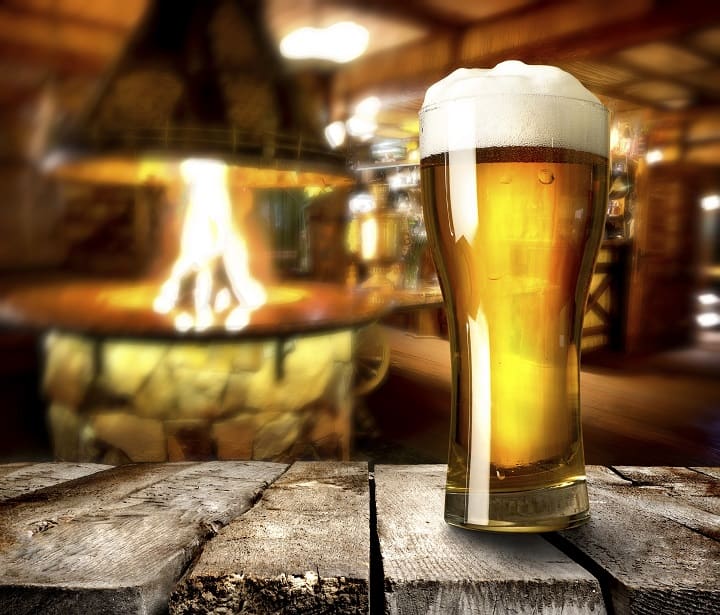 Now we come to beer, which is inferior to wine for acne, but still not a threat which you must banish to the badlands of acne villains for good. Firstly, beer has a surprising amount of antioxidants, which again counteract alcohol’s glutathione depletion.
Now we come to beer, which is inferior to wine for acne, but still not a threat which you must banish to the badlands of acne villains for good. Firstly, beer has a surprising amount of antioxidants, which again counteract alcohol’s glutathione depletion.
Even a 6 cheap six back bought from a liquor store at 3am can contain defensive ferulic acid and epicatechins, and various polyphenols. The barley plant contains numerous natural antioxidants, albeit less than red grapes, which manifest in the cool, frothy beverage. A Guinness stout features a respectable ORAC score of 210, while a Budweiser scores 150.
Beer’s main fault is its higher carbohydrate count than wine, due to originating from starchy barley. The content ranges from 6 carbs per light beer to 25 in the richest, thickest brews. Too many carbs equals higher bloodstream insulin and eventually oily skin.
The solution is to factor beer into your overall carb intake, as you would a banana or plate of white rice. If your diet is already relatively acne-friendly then a cool beer per night is not enough to hurt you. Swill multiple beers each night and your carb intake will stack up. If you’re an exercise fanatic who’s constantly expending energy, then you have more room for carbs (and potentially beer) than the average couch potato.
Six – oily skin
Despite having thousands of studies conducted on it, there’s still several unexplored frontiers with alcohol. Just this year (2024), a totally new skincare discovery was made – that alcohol has a direct stimulating effect on oil production.
We’d long assumed that any oily skin reports were purely down to the carb content of beer, but this study tested isolated ethanol on human-derived sebocytes (oil-producing cells). The result was a surge in sebum production, which didn’t occur with methanol (rubbing alcohol), though did with propanol.
The reason turned out to be fatty acid ethyl esters, such as ethyl palmitate, which are produced during alcohol’s detoxification. This is only the 4th most important alcohol detox pathway in humans (the enzyme alcohol dehydrogenase ranks first), but could be enough to make even red wine an oily skin risk. The ethyl esters are even used in hair studies to measure people’s alcohol consumption.
What does all this mean? Oily skin is a moderate risk with any alcoholic beverage, but the degree to which this will affect you is mysterious. The floodgates may only open at very high alcohol intakes, or people might have genetic variants which affect the amount of ethyl esters generated. Unlike the glutathione depletion, we know of no direct way to counteract this. Oily skin is also much less harmful if your skin is replete with vitamin E. Your task then, is to keep this oily skin power in mind, but not obsess over it.
Seven – bacteria
Another secret discovery is the role of bacteria in metabolising alcohol. Those in your gut and face consume alcohol just like we do; they don’t get drunk, but churn out various metabolites, for good or ill.
For example, there’s a condition called autobrewery syndrome where your gut effectively transforms into a mini brewery. By possessing certain yeast species, you can produce ethanol molecules whenever you eat carbohydrates, meaning that you get tipsy without touching a drop. Schoolkids have used autobrewery syndrome as an excuse; drunk drivers have even escaped conviction. Genuine victims have wondered why they’ve been staggering around with no coordination.
On your face though, there’s a more sinister bacterial connection. After drinking alcohol, it is secreted through sweat glands into the arms of p.acnes, s. aureus and s. epidermidis. These ferment raw alcohol into acetaldehyde, the toxic molecule we discussed earlier. Its pro-inflammatory powers come into force, but this time focused directly on your face.
This is another secret pathway through which alcohol affects your skin. Currently, we have no way to control it, but there’s various friendly strains of facial bacteria. One day, we might be able to deploy these to beat back those that ferment alcohol into toxins.
Eight – alcohol shields
The smart acne-clearing enthusiast doesn’t just choose the best alcoholic beverage, but optimises their bodily defenses. Much of this will happen by default if you follow an acne-friendly diet. We mentioned the essentials of supplying glutathione’s ingredients (zinc, sulphur), and taking more vitamin C. But there’s a whole world of secret shields which only the wisest are aware of.
Cucumber is one of the most surprising. This is a relatively weak vegetable for acne, with few antioxidants and little vitamin C. Yet a large study found that consuming cucumbers increased the detoxifying enzyme acetaldehyde dehydrogenase (ALDH) by a stonking 87.25%. That’s the chief enzyme which metabolises acetaldehyde, the pro-inflammatory alcohol by-product, turning it into harmless acetate.
Pears and asparagus have similar evidence to their name, with 90% and nearly 150% increases in ALDH respectively. Broccoli is particularly strong, as its sulphoraphane compound is proven to bind to sites in ALDH’s molecular structure. Black tea and cheese are also promising ALDH boosters. Personally I’ve always found that broccoli tastes better the morning after drinking, but I could be imagining things. Or maybe, our taste buds begin to crave foods they know will aid their detox efforts.
Nine – isolate alcohol, don’t get confused!
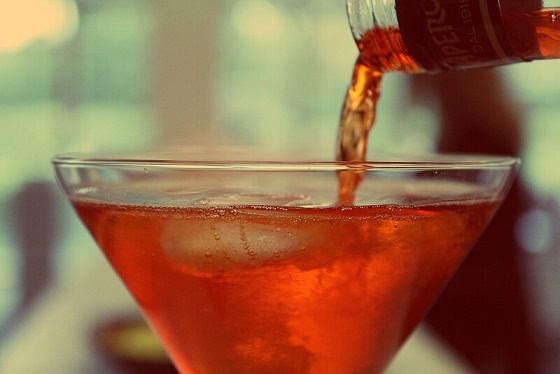 This is quite an obvious point, but so obvious that some might overlook it – ensure that it’s really alcohol causing your acne! With alcohol comes a host of tasty snacks and acne-causing circumstances.
This is quite an obvious point, but so obvious that some might overlook it – ensure that it’s really alcohol causing your acne! With alcohol comes a host of tasty snacks and acne-causing circumstances.
If you tend to drink in a smoky dive bar with second hand tobacco fumes wafting around your face, that will corrode your skin quality. If you constantly stay up until 4am, then the dull skin tone of the sleep deprived will become yours.
Then there’s the snacks people inevitably reach for as their brain (or what’s left of it) enters a mindless state. Crisps, chocolate, a sudden takeaway pizza – none are great for your skin. We’re not saying that you have to avoid those things completely, just to be laser focussed and ensure that alcohol itself is really the acne villain.
Ingredients within beverages can cause similar confusion. In a pink, fruity cocktail, it could really be the sugar that worsens your acne. In beer you have the carbs again. People might crawl out of bed the next morning, not remembering everything they ate and drank, and file those two new pimples they see under “alcohol”. Your job is be intelligent.
Conclusion
These are the alcohol facts you simply must know. Go forth into the world, and use this newfound wisdom to walk through the fires of alcohol unscathed.
Something else to remember is that alcohol’s acne dangers veer towards the long term rather than short term. Acetaldehyde can add inflammation rapidly, but the glutathione and vitamin depletion, and the oily skin, should take repeated assaults for your acne defences to be breached. This is why it’s easily possible to take the concept of beer too far one Saturday night and wake up with your skin looking no different.
Thanks for reading!

Hi, nice article👍. Are there any advantages to alcohol free beers that we should be aware of in terms of mineral content, for example? or would be best to focus more on red wine as a treat every now and then?